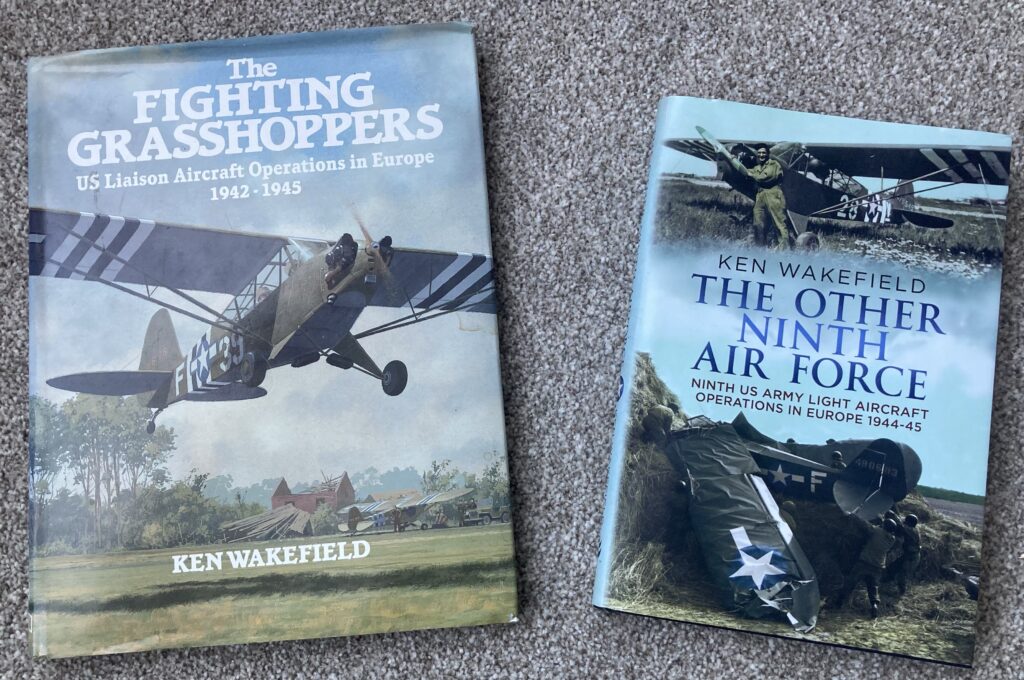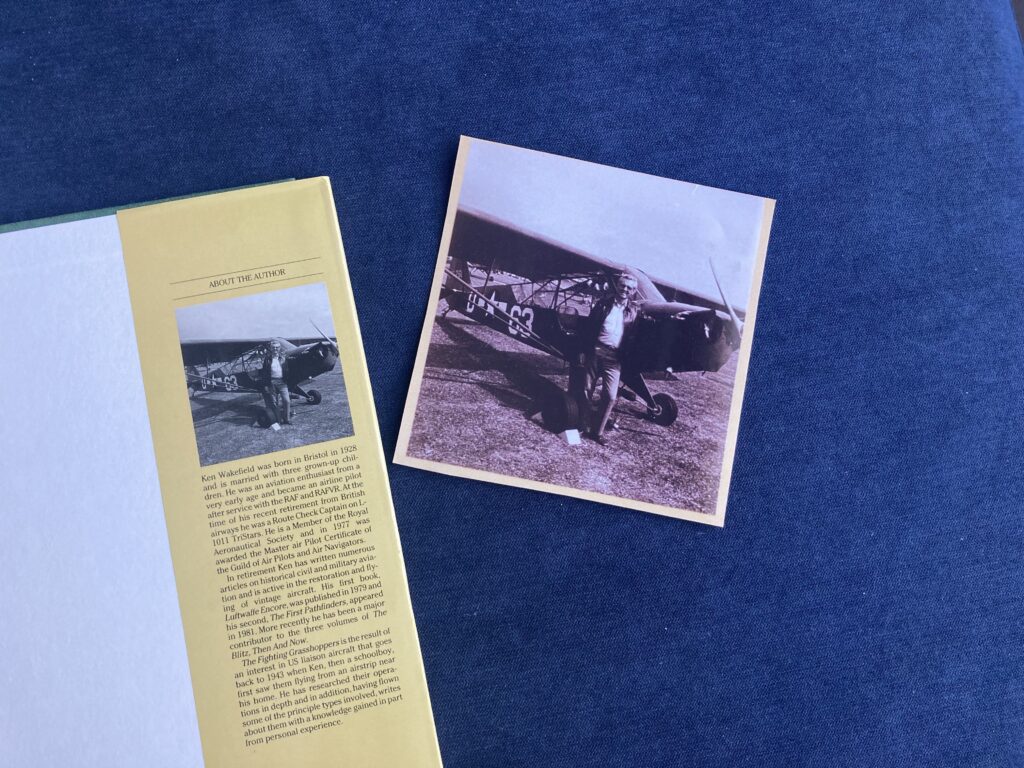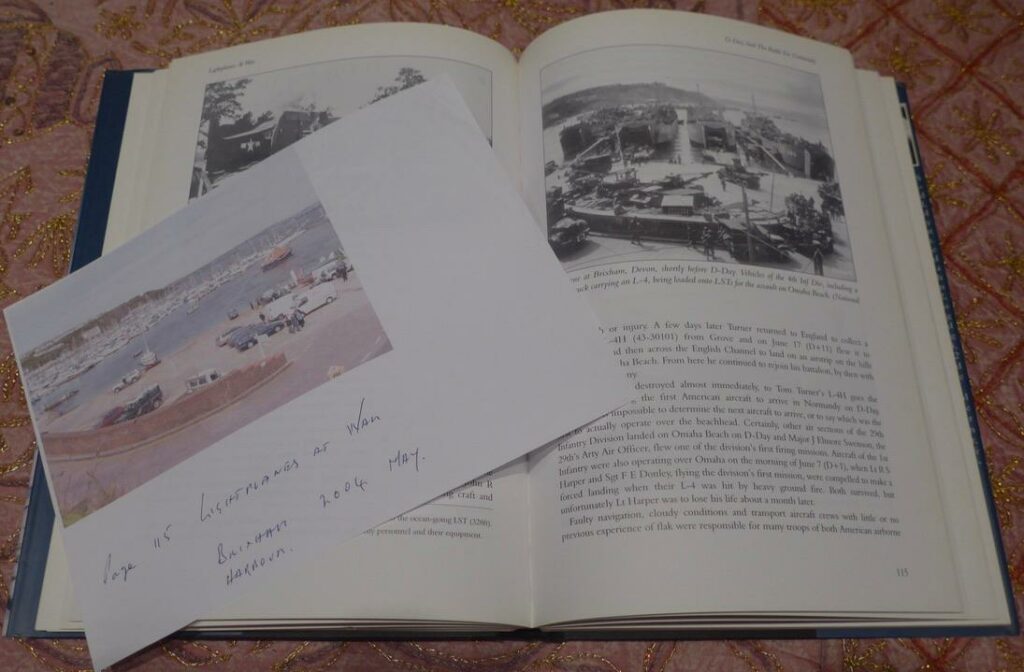It is only within the last two years that I finally got my own L4 Cub but I have been a member of the Vintage Piper Aircraft Club for over 25 years. I recently received this sad email:
With much regret that we report that Ken Wakefield, the world renowned reference historian and expert on US liaison aircraft passed away last month after a short stay in hospital. Ken was involved with the VPAC from its very beginning — member number 004 after the club’s founders.

Ken was born in Bristol, the family home being close to the former Whitchurch aerodrome and this must have kindled his interest in aviation. When, in 1944, the American First Army based Piper L-4s on a nearby airstrip, it had a huge influence on the sixteen-year old West Country lad. “One day I’m going to own one of those”, he pledged. This marked the beginning of Ken’s association with the Piper Cub and other US Liaison “L-Bird” aircraft. 38 years later he achieved that ambition. His knowledge of US liaison / observation aircraft was legendary and he devoted much of his time researching and writing books on the subject. Any restorer, before starting his project, begins today by reading the ‘books of Ken’ and he was always happy to help. With extreme kindness, he encouraged youngsters, gave advise to hundreds of pilots and through his meticulous research and publications connected families of veterans with the past.
Ken had a distinguished career as an airline pilot which began flying charter flights to Johannesburg as a DC-3 co-pilot, retiring as a senior captain with British Airways on Lockheed TriStars. He was also a member of the Royal Aeronautical Society and holder of the Master Pilot Award of the Guild of Air Pilots and Air Navigators.

We have lost a true gentleman, Godfather to the L-Birds and a true friend to so many.
(via Richard Keech, Vintage Piper Aircraft Club)
Like any self respecting Cub enthusiast, I have two of Ken’s books:

Both are well thumbed. I lost my original “Fighting Grasshoppers” somewhere along the way, and recently replaced it at some expense. I didn’t pay the £100 or so that I just saw on Amazon, maybe half that – they are now quite rare to find.
When I heard of Ken’s death, I dug out his books for another look through. A piece of paper fluttered out from between the pages of “The Fighting Grasshoppers”. Turning it over, it was a photograph of Ken, the same photo used on the back flap of the dust cover:

I replied to Richard and the VPAC wondering if Ken did this with all his books and got this reply:
Well, your question prompted me to check my copy of “Lightplanes at War” and look what I found inserted in page 115. I’ve seen it before, but never thought where it had come from so maybe Ken was in the habit of popping in the odd photo. The photo on Pg115 shows Brixham Harbour in 1944 and the hand-written note on the loose photo tells that it shows the same in 2004.

Mike Mothershaw, another senior VPAC member, wrote:
Richard passed your question on to me and the straight answer is, not sure. It might well have been one of those nice little touches he did when the books were first published, the sort of thing Ken would do. Obviously, that’s some time ago now.
I’ve got three of his books sitting on my shelf and, just like you, I couldn’t help but pick them up and thumb through the them again. Later, I did a search using the author’s name and was surprised to see not only did Ken write a number of books on the L-Birds in some depth, but also wrote several on Luftwaffe operations during the war, and there are also three volumes he wrote on The Blitz (‘then and now’). A busy chap!
Some of Ken’s books are now hard to find, one of them appeared on Amazon a while ago with a three figure price tag prompting him to declare he wished he’d put a case of them to one side !
Back to the question of photos, I’m expecting to see Ken’s daughter and son-in-law in a few weeks time so I’ll ask them the question.
I may also be able to answer the question…during research on Amazon I ended up ordering “Lightplanes At War” – when it arrives we will have to see if anything flutters out. Thanks Ken.
